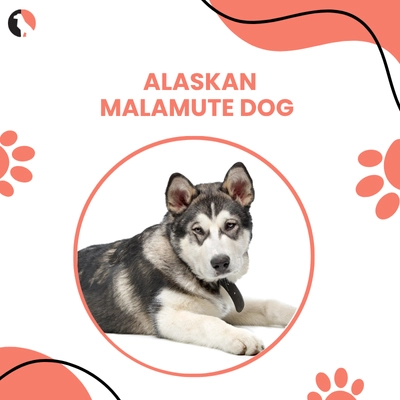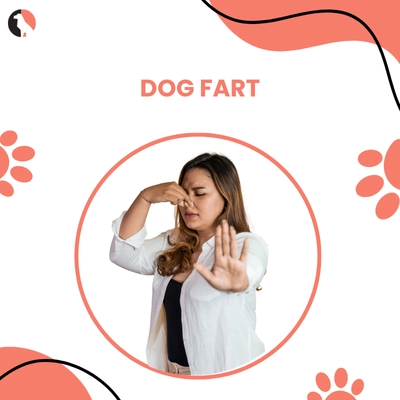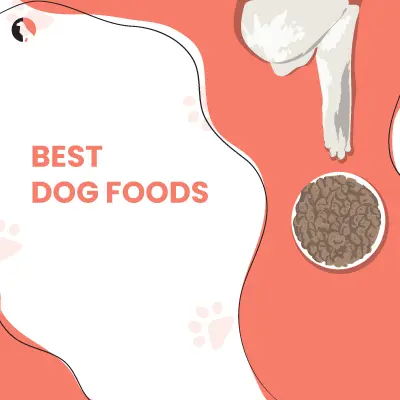Dogs always lean into meat like it’s coded into their DNA, and no doubt, it somewhat is, but that doesn’t shut the doors of fruits on them. The question, what fruits can dogs eat, pops up more often than you’d think, especially when you’re mid-snack with apple slices and feel those eyes boring into you, asking for just one bite. It’s valid. Nobody wants a vet emergency over a blueberry.
Here’s the deal: dogs can eat fruit, but it’s not a free-for-all. Some fruits are A+, hydrating, vitamin-packed, great texture, naturally sweet, etc. These are ok for dogs to eat. Others? A total no; Like, do-not-pass-go no, because the results are severe, i.e, nausea, diarrhea, kidney issues, even toxicity. Yes, even the tiniest piece of the wrong fruit can throw your dog’s system into chaos.
So before you think of fruit snacking for your pup, slow down, look at the fruit, google it if you have to, and even better, Better yet, read on.
We’re laying it all out in this guide, what fruits are good for dogs, what fruit can dogs eat without a second thought, what they definitely cannot have, and some quick-fire rules to keep your dog happy, safe, and still licking the juice off their chin.
Can Dogs Eat Fruit?
Yes. But also, maybe not. It’s one of those answers. Confusing? Yeah, welcome to dog parenthood.
Let’s clarify. Can dogs eat fruit? Technically, absolutely. In fact, they’re omnivores, which just means their bodies are fine digesting both meat and plant-based food. And fruit? It’s kind of amazing for them, low in calories, high in water, packed with natural fiber, antioxidants, and vitamins. This all works.
But (and it’s a big but) what fruits can dogs eat safely depends on more than just what’s in your fridge; it depends on your actual dog. Age, size, allergies, breed quirks, each factor changes the game. If you got a puppy, you’ll want a whole different list of what fruits can puppies eat; you’ve got a senior dog with diabetes or kidney issues? That banana could be a sugar bomb waiting to happen, so you have to be careful with all the dogs in a different way.
Some dogs can’t tolerate fructose. Some need low-potassium diets. Others are on prescription food, where adding even “healthy” treats like fruit can knock their nutrient balance sideways. If your dog’s on a special diet or has chronic conditions, pause before tossing that grape (which is toxic, by the way), get it checked by your vet first. Always.
So yes, dogs can have fruit, but that’s not the same as “fruit is always safe.” Choose wisely. Monitor the portions. And most importantly, know which fruits are totally safe and which ones are, well, absolutely not.
Explore: Mental Stimulation for Dogs: 5 Creative Ways to Engage Your Pup’s Mind
How Much Fruit Can Dogs Have?
Moderation is the ultimate key. Fruit should be allowed to make up only about 10% of your dog’s daily food intake. The other 90% should come from a complete and properly balanced dog food that meets all kinds of their nutritional needs. Think of fruit as a bonus, not a staple.
What Fruits Can Dogs Eat? Here’s a Full List
Let’s break it down. Below are fruits dogs can eat, how to serve them safely, and why they might actually be a good idea in small doses.
1. Apples
- Low in fat and high in fiber, vitamin C, and A
- Great for senior dogs who need help with digestion
- Be sure to remove the core and seeds, they contain cyanide
- Crunchy texture can help clean teeth
Dogs love to eat apples, and apples make a great snack in both fresh and commercial forms for dogs; apple-based dog treats are widely available and are easier to portion out.
2. Bananas
- High in potassium, vitamin B6, and C
- A natural energy booster, but high in sugar
- Remove the peel, dogs can’t digest it
- Best in small, occasional amounts
Good for pups needing a quick snack, some even enjoy frozen banana pieces during hot weather quite a lot,
3. Blueberries
- Rich in antioxidants and vitamin C
- Low in calories and sugar
- Ideal training treat for puppies and adult dogs
Studies suggest antioxidants in blueberries may help reduce cognitive aging in animals.
4. Blackberries
- Contain fiber, vitamin C, and anthocyanins
- But, watch out, they also contain trace amounts of naturally occurring xylitol
- Only 1–2 berries for small dogs, not more. You may count in a few more for larger breeds.
While blackberries are usually safe, overfeeding can cause their stomach issue.
5. Strawberries
- Full of vitamin C, fiber, and antioxidants
- Can help whiten your dog’s teeth
- Slice them into small pieces or you can also mash into food
Too many strawberries can lead to a sugar rush, so go easy.
6. Watermelon
- It contains maximum of water, which is great for hydration
- It is high in vitamins A, B6, and C
- Remove the fruit’s seeds and rind
This can be a perfect summer treat, especially chilled. Just keep portions small to avoid tummy trouble.
Learn More: Can My Pet Be an Emotional Support Animal?
7. Cantaloupe
- It is a hydrating fruit, packed with vitamins
- It is low in calories but high in sugar
- Dogs prone to diabetes or weight gain should eat less amount of it
Offer in cubes or melon balls. Skip the rind.
8. Honeydew
- Very similar to a cantaloupe in benefits and sugar content
- Safe in moderation
- Remove skin and seeds before serving
Great for hydration, but watch the sugar if your dog is sensitive.
9. Pineapple
- Loaded with enzymes, antioxidants, and vitamin C
- Must be peeled and cored before serving
- Acidic, some dogs may not like the taste
Great in small amounts, but too much can lead to diarrhea.
10. Oranges
- Safe, but not every dog likes the strong citrus smell
- High in vitamin C
- Limit due to acidity and sugar
Always peel and remove seeds before feeding.
11. Peaches
- Provide fiber, antioxidants, and vitamin A
- Remove the pit, it contains cyanide
- Opt for fresh peaches, not canned (which usually contain syrup)
Safe when fresh, but make sure you slice it into manageable pieces.
12. Pears
- These are rich in vitamin C and fiber
- Like apples and peaches, their seeds and cores must be removed beforehand
- Slice into bite-sized pieces
Pears are easy to mix into dry food or serve as standalone snacks.
13. Mangoes
- High in vitamins A, C, E, and B6
- Must remove the pit and skin
- Mangoes are very sweet; therefore, too much can upset the stomach
It is a tropical option your pup might love quite a lot, but serve it sparingly.
Check this out: Dog Boarding Costs in 2025: What to Expect and How to Save
14. Kiwi
- Packed with vitamin C, fiber, and potassium
- Remove skin and seeds
- Start providing tiny portions first, to test your dog’s tolerance for it
Too much can lead to diarrhea or stomach upset due to fiber content.
15. Cranberries
- It is high in vitamin C and antioxidants
- It can support urinary health.
- Tart is a good option, many dogs prefer cranberry-flavored treats over raw berries
Great in moderation, especially for older dogs.
16. Tomatoes (Ripe Only)
- Safe if ripe and red
- Remove green parts: stems, leaves, and unripe tomato contain solanine
- Serve in small, occasional amounts
Not a go-to snack, but not off-limits either.
17. Raspberries
- Low in sugar, high in antioxidants and fiber
- Contains trace xylitol, so don’t overfeed
- Good for older dogs in small amounts
One of the healthiest berries in moderation.
18. Avocados (With Caution)
- Only the soft flesh is safe
- The pit, skin, and leaves contain persin, which is toxic
- Rich in healthy fats and vitamins
If you’re unsure, skip it altogether or use an avocado-based commercial dog treat.
What Fruits Can Puppies Eat?
Now that you have got an answer to what fruits can dogs eat, don’t forget that adult dogs and puppies got different digestive systems.
Puppies, curious little land sharks with baby teeth and boundless energy, can eat many of the same fruits as adult dogs, yes, but here’s the thing: their tiny, still-learning digestive systems aren’t exactly built for sudden surprises. Go easy. One bite too bold, and suddenly you’re cleaning up something you’d rather not describe.
Start with soft fruits, like bananas: no sharp edges, no acidity, no drama. A blueberry? Perfect. Small, squishy, mildly sweet. It won’t offend their stomach. But here’s where it gets real, every pup is different. One might adore a slice of melon; another could scratch its ears raw or start zooming erratically five minutes later. Allergies? Yeah, they’re a thing; itchy skin, weird rashes, or worse, uninvited puddles and piles, so slow it down, you’re not throwing them a fruit salad; you’re running a test lab, one nibble should be given at a time.
If you’re still pacing around the kitchen wondering what fruits can puppies eat, don’t reinvent the wheel. Stick with the friendlies. Apples (peeled because nobody wants to argue with a choke hazard), seedless watermelon (no seeds, no stress), and a few blueberries. That’s it. At least until their guts grow up a bit.
Safety Tips for Feeding Fruit to Dogs
Fruits might look harmless, vibrant, sweet, and tempting, but not all that’s plucked from a tree belongs in a dog’s mouth. Before you hand over that slice, hit this quick-fire checklist like it’s second nature:
- Wash it. Seriously. Not just a simple rinse, give it a good scrub.
- Chop it. Pit it. De-seed. Strip away rinds, stems, leaves. That hard peach pit is not just a choking hazard, it’s cyanide in a crunchy shell; apple seeds got the same story; Grape stems are another trouble; and rinds? Dogs don’t digest rubbery obstacles, no matter how colorful.
- Less is better. Think snack, not meal. A cube or two here and there, maybe a slice if it’s watermelon season, but this isn’t a smoothie bar for pets; hence, high sugar, even the natural kind, can spike things you don’t want spiked.
- New fruit? Watch and wait. Some dogs are tanks. Others? They’ll throw up a blueberry like it’s a firecracker. Monitor them after trying anything new; yes, even if your neighbor’s retriever eats bananas like popcorn, yours might not be able to digest them at all.
- And for the love of all things furry, skip anything floating in syrup. Canned fruits? Usually, a sugar bath. Sticky, sugary, fake-fruity mess. Not safe. Not cute. Not worth it at all.
What Fruits Can Dogs Not Eat?
Let’s make this brutally clear: some fruits aren’t just “bad” for dogs, they’re straight-up dangerous. Like, call-the-vet-now dangerous.
- Grapes and Raisins: Tiny, sweet, innocent-looking… and capable of shutting down your dog’s kidneys faster than you can say “snack.” No antidote, no jokes. Just don’t.
- Cherries: It’s not the flesh, it’s the pit. That rock-hard center? Packed with cyanide. Yep, cyanide, plus a real choking hazard, especially if your pup’s the type to wolf down treats without chewing.
- Citrus Peels and Seeds: Zesty for humans, toxic for dogs. Essential oils in those rinds? Not so “essential” for your pet. They can cause stomach upset, drooling, even depression. Yes, citrus can make your dog sad.
- Unripe Tomatoes: The green kind, the ones still clinging to the vine, are loaded with solanine, it’s a toxin, you don’t want it in your dog’s belly. Trust that.
- Pits of Peaches, Plums, Apricots: Hard as stone, sharp as regret. These things can crack a tooth or block the gut. Bonus risk? Some also contain cyanide.
If your dog accidentally chomps one of these, don’t Google and guess, pick up the phone and call your vet immediately or hit the Pet Poison Helpline: (855) 764-7661. Seconds matter.
So, What Fruits Can Dogs Eat?
Let’s pull the focus back. Zoom in. Re-center on the one question wagging at the heart of it all: What fruits can dogs eat?
Turns out, quite a few; apples, blueberries, a chilled slice of watermelon, even a sliver of ripe mango; these fruits dogs can eat are safe, refreshing, full of fiber, and kind of adorable as mid-day snacks as well.
But here’s the kicker that must be in your mind: not every fruit is for every pup.
What fruits can dogs have? Depends. Big dog or tiny pup? Lazy sleeper or zoomie machine? Healthy? Allergic? Old? Young? And yes, what fruits can puppies eat might not match what a full-grown dog can scarf down.
And the most important thing is to talk to your vet before adding new fruits to your dog’s diet, as they know what your specific dog can handle. If your dog begs for more and still acts like their goofy, tail-wagging self after a fruity treat, you’re likely doing something right.








































































